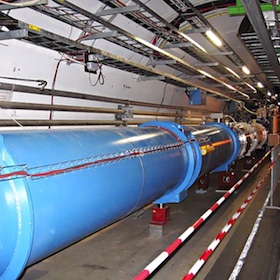Higgs Boson Discovered At CERN?
CERN (European Organization for Nuclear Research) physicists are more certain than ever that the new particle discovered last summer is the Higgs boson – the particle theorized by Peter Higgs, among others, that can give elementary particles mass.
“The preliminary results with the full 2012 data set are magnificent,” Joe Incandela, leader of one of the discovery teams, said in a statement released by CERN. “To me it is clear that we are dealing with a Higgs boson, though we still have a long way to go to know what kind of Higgs boson it is.”
Without further data, CERN physicists are not ready to confirm the particle as the Higgs boson, state how it works, state what it means for the universe or even acknowledge that there is only one kind of Higgs boson particle, according to The New York Times. Some theories even believe that there might be an entire set of Higgs bosons. Once they are able to measure the particle’s spin and its decaying process, there will be more information available.
CERN’s Large Hadron Collider (pictured above) will be down for two years as it undergoes repairs. While high-energy particle collisions will have to hold off until 2015, CERN’s teams of physicists will keep analyzing their stockpiled data to learn more about the potential Higgs boson particle.
Get Uinterview's FREE iPhone App For Daily News Updates here.
Get the FREE Uinterview iPad app here and watch our videos anywhere.
RELATED ARTICLES
Get the most-revealing celebrity conversations with the uInterview podcast!






Leave a comment